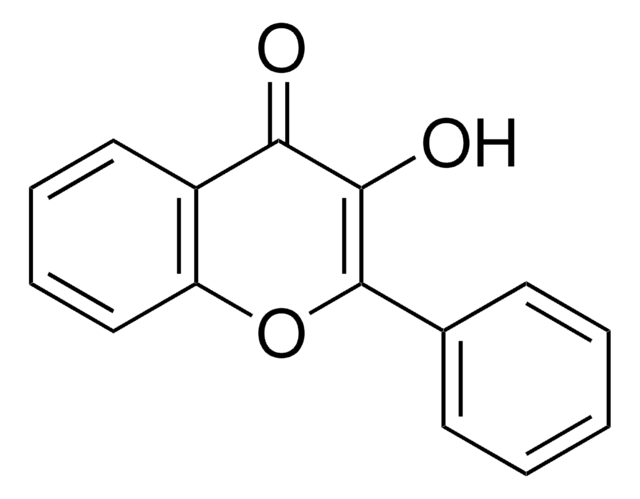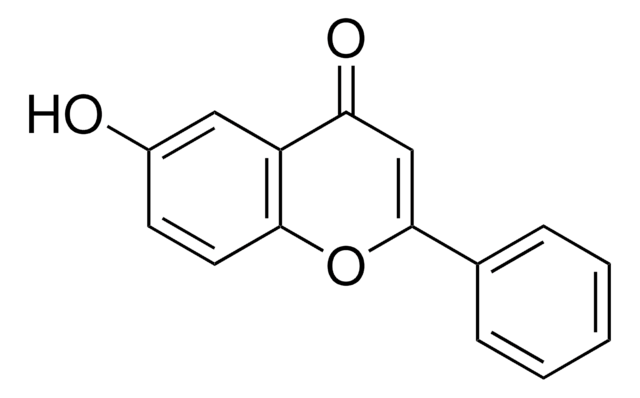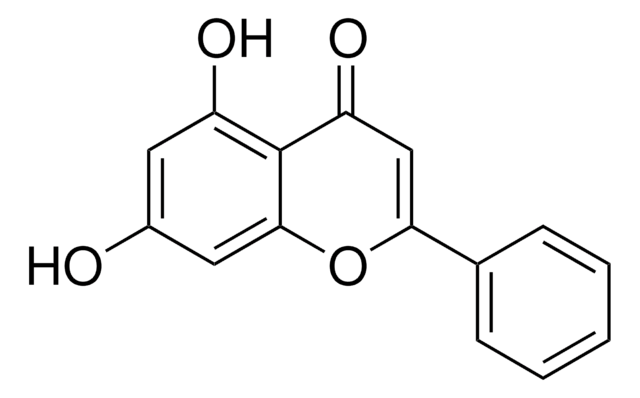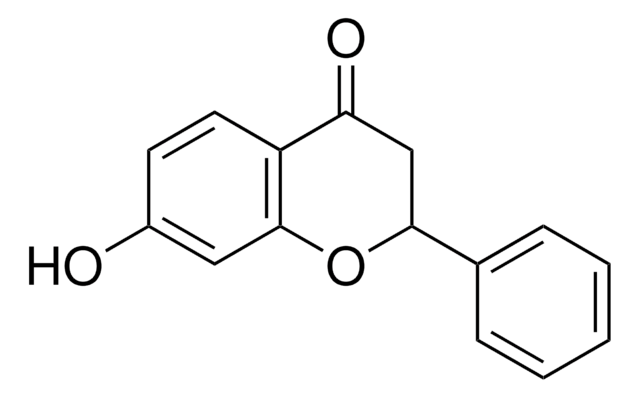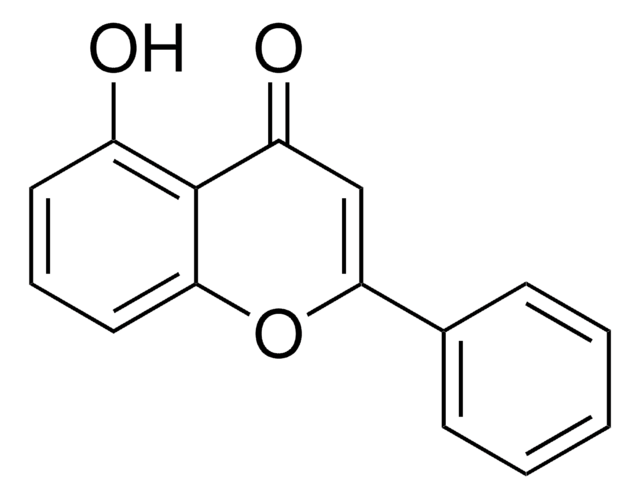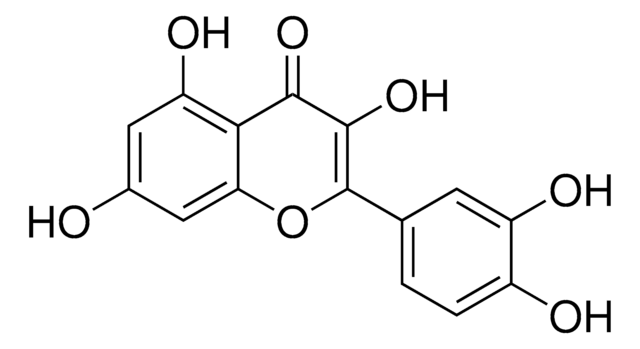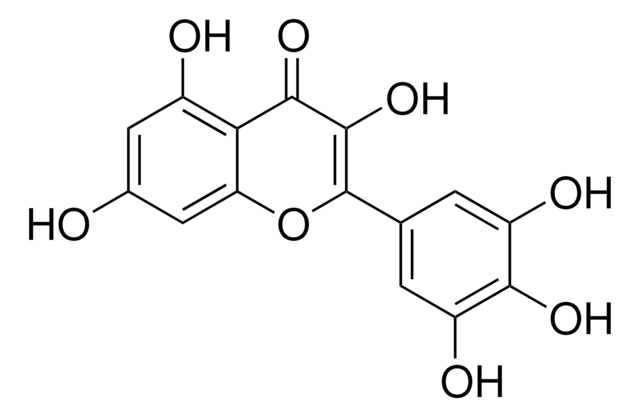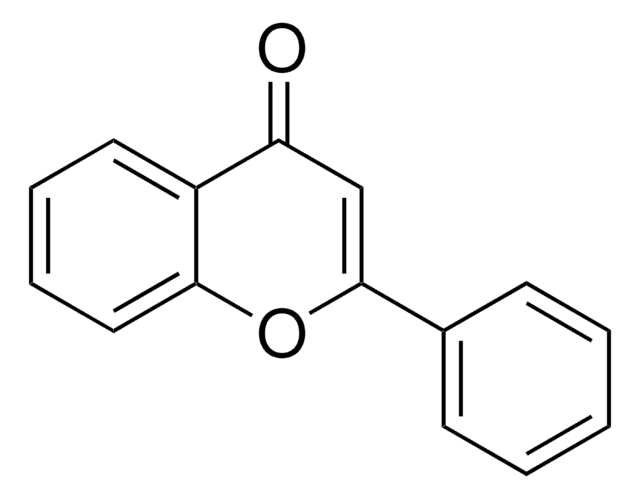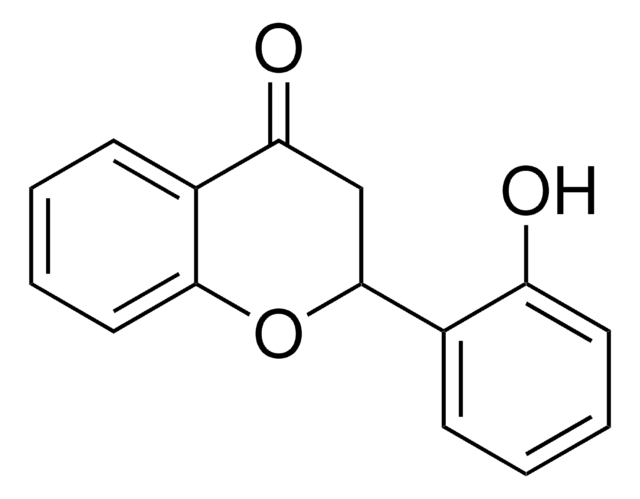H4530
7-Hydroxyflavone
≥98%
Synonym(s):
7-Hydroxy-2-phenyl-4H-1-benzopyran-4-one, NSC 94258
About This Item
Recommended Products
Assay
≥98%
mp
245-247 °C (lit.)
SMILES string
Oc1ccc2C(=O)C=C(Oc2c1)c3ccccc3
InChI
1S/C15H10O3/c16-11-6-7-12-13(17)9-14(18-15(12)8-11)10-4-2-1-3-5-10/h1-9,16H
InChI key
MQGPSCMMNJKMHQ-UHFFFAOYSA-N
Gene Information
mouse ... Hexa(15211)
rat ... Ar(24208) , Gabra2(29706)
Looking for similar products? Visit Product Comparison Guide
Application
- Acting as a biologically valuable acceptor in O-glycosidation reactions
- Involved in synthesis of fully phosphorylated flavones for use as pancreatic cholesterol esterase inhibitors
- For O-methylation with di-Me carbonate
- Linked by a polymethylene chain for synthesis of α1-adrenoceptor antagonists
- Involved in Baylis-Hillman reactions
- Involved in phase-transfer catalyzed glucosylation for synthesis of glucosylated flavonoids
Signal Word
Warning
Hazard Statements
Precautionary Statements
Hazard Classifications
Eye Irrit. 2 - Skin Irrit. 2 - STOT SE 3
Target Organs
Respiratory system
Storage Class Code
11 - Combustible Solids
WGK
WGK 3
Personal Protective Equipment
Choose from one of the most recent versions:
Already Own This Product?
Find documentation for the products that you have recently purchased in the Document Library.
Our team of scientists has experience in all areas of research including Life Science, Material Science, Chemical Synthesis, Chromatography, Analytical and many others.
Contact Technical Service